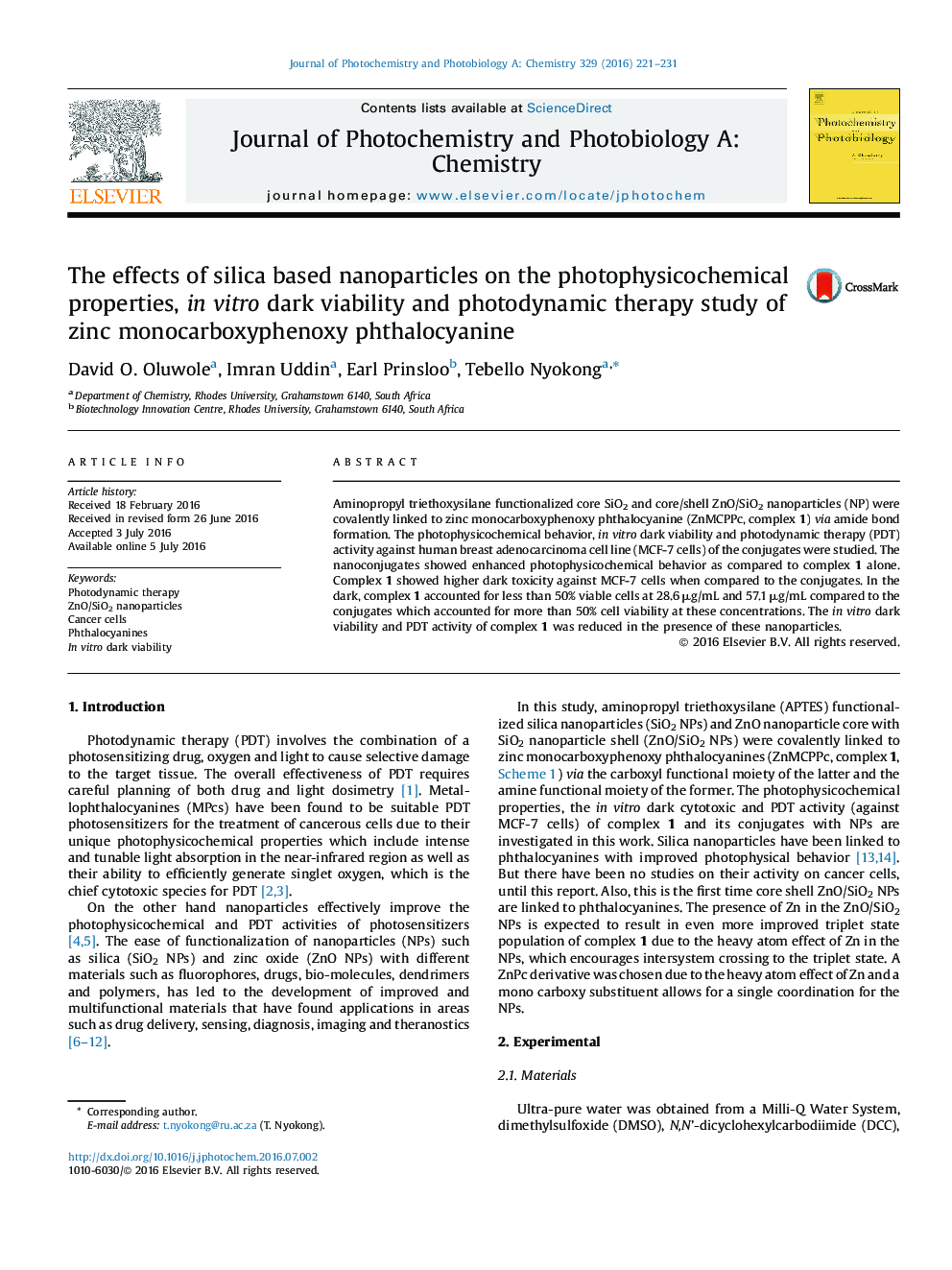| Article ID | Journal | Published Year | Pages | File Type |
|---|---|---|---|---|
| 25998 | Journal of Photochemistry and Photobiology A: Chemistry | 2016 | 11 Pages |
•SiO2 and core/shell ZnO/SiO2 nanoparticles were covalently linked to zinc monocarboxyphenoxy phthalocyanine.•The nanoconjugates showed enhanced photophysicochemical behavior as compared to phthalocyanine alone.•In vitro dark cytotoxicity against MCF-7 cell line was less for the conjugates than for phthalocyanine alone.
Aminopropyl triethoxysilane functionalized core SiO2 and core/shell ZnO/SiO2 nanoparticles (NP) were covalently linked to zinc monocarboxyphenoxy phthalocyanine (ZnMCPPc, complex 1) via amide bond formation. The photophysicochemical behavior, in vitro dark viability and photodynamic therapy (PDT) activity against human breast adenocarcinoma cell line (MCF-7 cells) of the conjugates were studied. The nanoconjugates showed enhanced photophysicochemical behavior as compared to complex 1 alone. Complex 1 showed higher dark toxicity against MCF-7 cells when compared to the conjugates. In the dark, complex 1 accounted for less than 50% viable cells at 28.6 μg/mL and 57.1 μg/mL compared to the conjugates which accounted for more than 50% cell viability at these concentrations. The in vitro dark viability and PDT activity of complex 1 was reduced in the presence of these nanoparticles.
Graphical abstractSiO2 and ZnO/SiO2 nanoparticles were covalently linked to zinc monocarboxyphenoxy phthalocyanine resulting in enhanced photophysicochemical behavior and improved in vitro dark cytotoxicity against MCF-7 cell line.Figure optionsDownload full-size imageDownload as PowerPoint slide
